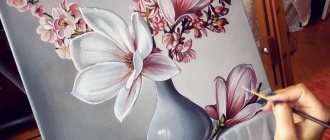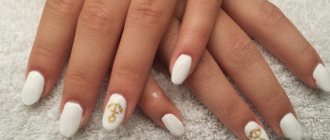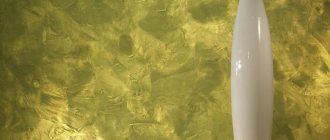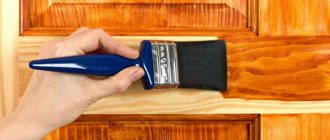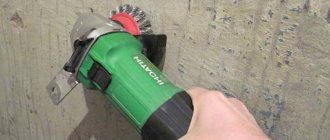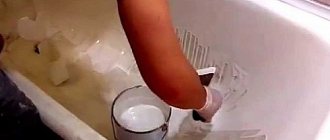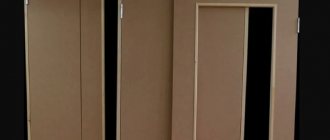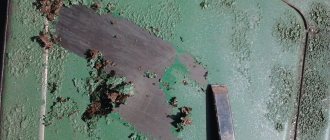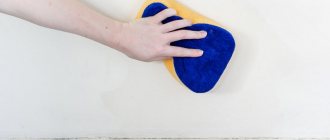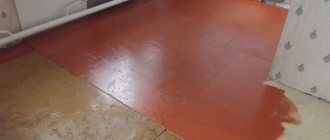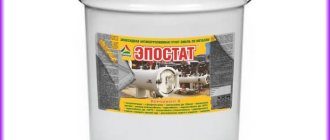Good to know
— How to paint grape leaves — How to choose the right artist on the Internet — The process, stages of painting a children’s “Ship” — How a novice artist can find an order for wall painting — Using base “C” paint in wall painting — How and with what to paint plastic How to apply the texture of plaster in wall painting - Where and how you can use relief in the interior
Application, features
Glow-in-the-dark paints are used to decorate interiors, building facades, color various products, clothing, souvenirs, furniture elements, cars, bicycles, and advertising banners. With their help, magnificent paintings and wall paintings are created.
Available for various applications:
- interior or façade;
- for wood, glass, metal, plaster;
- translucent, transparent;
- with high or low moisture resistance.
Most compositions are made on an acrylic base with suitable properties. Paints that glow in the dark for painting? Several primary colors have been created that can be used to create different shades when mixed.
When choosing, pay attention to the labeling and operating conditions.
Luminescent paints
Paints containing phosphor act on the principle of a light-storage battery. During the day they accumulate light and are then able to glow in complete darkness.
Which is better: heated floors or radiators?
Warm floorBatteries
- 30 minutes of charging is enough for 12 hours of glow.
- The light intensity gradually decreases.
- Pure phosphor has a greenish or blue glow; with the addition of dyes, different colors are obtained.
- Service life up to 30 years.
- Refers to expensive materials.
Fluorescent paints
These luminous paints do not accumulate sunlight, but brightly reflect ultraviolet rays. Therefore, such paintings are supplemented with UV lamp lighting.
- They have many bright colors and shades;
- The coating fades when exposed to sunlight and is destroyed at high temperatures;
- They belong to the budget price segment.
Universal composition
Manufacturers have created a mixture that glows in the dark and from UV rays. It is a coating of reflective pigments and phosphor. Features bright colors.
Fluorescent paints that glow in the dark? It is used to create decorative wall panels and in other areas.
Question answer
You are an amazing master! I make bas-reliefs and your site gives a lot of interesting information. Thank you. Read answer
Hello, please tell me about the material for painting the walls.
Is Lakra's deep penetration primer suitable? Ordinary finishing putty was applied. Is it necessary to apply artistic primer for acrylic, if so, can it be applied over a primer (Lakra)?! We have thin on sale. Sonnet primer, and Sonnet acrylic. There is also Polycolor acrylic, which is better to use, please tell me. Thank you in advance. Best regards, Svetlana. Read the answer
Hello, I want to express my admiration for you!!! You have a gift from the Lord!!! 10 years ago I graduated from art school and completely stopped drawing, you inspired me!!! I want to paint the doors in the pantry made of fiberboard and painted Also Saldepovskaya oil paint, tell me what to prime and what paints are better to choose? Thanks in advance. Ekaterina.
Read the answer
Painting with fluorescent acrylic on a hard surface
Once upon a time there was a topic on painting with acrylic paints on fabric. I've been trying to kick myself for a long time to describe my own experience in this matter. I hope the information will be useful for those who want to draw, but don’t know where to start. Below the cut is a description of the process of painting an ordinary room door with fluorescent acrylic paints. [beware, there are pictures]
Introduction
I’m not an artist, and the last time I painted scribbles with paints was at school during an art lesson. Therefore, I made some mistakes, which I will tell you about. On the other hand, I did it, which means it’s not that difficult (with an acceptable quality error). So, initial data: 1. Patient: Wooden door, 800x2000mm, uneven surface - hardboard painted with white paint 2. Tools: Pencil, eraser, acrylic (regular and fluorescent) paints, colorless varnish, three brushes, roller, a couple of boards, bottles 3. Free space 4. Free time 5. Free desire Task: paint the door, while trying to have fun.
A little theory
Acrylic paints are water-dispersed paints based on polyacrylates (mainly polymers of methyl, ethyl and butyl acrylates), as well as their copolymers.
They dry very quickly - this is their advantage over other paints. It can be applied either in a very liquid, diluted state (diluted with water), or in a paste-like state, thickened with special thickeners used by artists, while acrylic does not form cracks, unlike oil paints. The paint lays down in an even film, has a slight shine, does not require fixing with fixatives or varnishes, and has the property of forming a film that can be washed off after drying only with special solvents. Acrylic paints and varnishes can be used on any non-greasy base such as glass, wood, metal, linen, canvas, etc. Fresh acrylic paint can be easily removed from objects with water, but when it dries it requires special solvents. Drying of acrylic paints occurs as a result of water evaporation, while the paint forms a chemically stable elastic film. Unlike oil paints, dried acrylic is characterized by greater strength and elasticity (water-based acrylic is less brittle); the paint does not crumble, its layer does not form cracks, and the surface does not peel off. Acrylic paint will not wrinkle over time and is not susceptible to normal temperature changes or changes in humidity conditions. [Based on materials from wikipedia.org and flur.ru] Fluorescent acrylic paints additionally contain a fluorescent pigment (luminophore), which, when exposed to UV lamp radiation, begins to glow in a certain color. The color depends on the pigment, and, in addition, regular acrylic can be mixed with fluorescent acrylic, thus obtaining any color with a slight loss of brightness. Fluorescent acrylic (as well as regular acrylic) is sold in the following form: - diluted in water (tubes, jars); — in the form of an aerosol (cylinders); - in powder form (jars with pigment).
ways to apply acrylic paints to a hard surface, but the main ones are brushes, a roller and an airbrush. Brushes
- the least demanding option in terms of money and skills.
with a roller
, but small details/contours will still have to be done with brushes.
An airbrush
allows you to create gradients and other interesting features, but it requires certain skills and money. As a test of the pen, I chose brushes.
Procedure
In general, the procedure should look like this: 1. Development of a sketch 2. Preparing the surface 3. Drawing with a pencil 4. Purchasing 5. Applying paints 6. Varnishing There is an opinion that the surface does not need to be primed until (item 2) and varnish after (item 6) applying paints. In my experience, it’s better to do this anyway; I’ll explain below. In general, this whole mess lasted two years for me - I’m a lazy bastard. I completely skipped step 2, and my drawing was constantly changing right up to the application of varnish. In principle, some processes can run in parallel. You can easily draw with a pencil in your free time, and at work, in your spare time, think about the general concept and add new elements to it. Similarly, when applying paints, you may want to correct something or finish painting - acrylic allows this.
Let's move on to practice
1. Development of a sketch
You must decide what you will draw; it is advisable to sketch at least general objects with a pencil on paper. You need to start somewhere, you can (and should) add new details later. In my case, it was a trivial thing in the form of the sun and moon, schematically drawn on an A4 sheet. If you wish, I think you can draw templates on your computer and then print them out in natural scale and trace them with a pencil.
2. Surface preparation
The ideal case would be a paint-free, smooth, sanded and primed surface. I was too lazy to remove the paint, sand and primer. The result is that after two years the paint doesn’t hold up very well. Where there is physical contact (the sliding door sometimes touches the wall) the paint has peeled off a bit. Therefore, I recommend being careful in terms of surface preparation: sanding and priming. In any case, it is necessary to wash the surface from dirt and degrease. But what to do if there is already a pencil drawing there? I did this: I washed it in small parts and immediately applied the drawing back, but more carefully and this time with thin lines.
3. Drawing with a pencil
This stage was the most interesting and longest for me. Something was always missing, and I wanted to completely redo what I had drawn. As a result, a certain final sketch was ready, but during the process of applying paints it turned out that it was far from final. It’s worth saying here: don’t be afraid, even if you applied paint, you can draw a new outline on top with a pencil and paint it again. Fortunately, acrylic dries quickly. It's also worth thinking about the colors (I just labeled the areas with letters like: F-yellow, G-green, etc.) that will cover your sketch. This is necessary in order to understand what paints to buy and how to mix them. Alternatively, take a photo and color it on your computer.
4. Purchase
On the advice of my friends, I went shopping to the 3-Color store. My friends recommended English acrylic and synthetic “Black River” brushes. After asking the lady behind the counter about some details of acrylic painting, I bought 12 tubes of acrylic, 3 brushes and 3 cans of varnish.
The ammunition for painting looked something like this:
More details
(note that this was purchased about three years ago):
1) Acrylic paint: 7 tubes of 75 ml + 1 tube of 60 ml.
Red (cadmium red), yellow (lemon yellow), green (leaf green), blue (coeruleeum), brown (burnt umber), deep violet, dark gray (payne's grey), white. All paint except white is from Daler-Rowney, white is from Ferrario Color SRL. We bought dark gray paint because we didn't have black, but it worked just fine. It’s also worth saying that I used the most blue paint - because it’s the background paint. So, when purchasing, estimate the number of colors depending on the area of the flowers. All paints, with the exception of white, cost 142 rubles. White (60ml) - 117.5 rub.
2) Fluorescent acrylic paint: 4 tubes of 75 ml.
Green, red, yellow, orange. The same Daler-Rowney. The choice was small, so I took those that were available. In the case of fluorescent paints, yellow was used the most - I had to apply many layers so that the texture of the door would not show through. Yellow paint is quite transparent (this also applies to regular paint)
. Each tube cost 159.5 rubles. In total, approximately 1,750 rubles were spent on paints.
3) Synthetic brushes: 3 pcs.
There was no “Black River”, but I immediately decided that I would need three pieces: for large plain surfaces, for medium-sized objects and for drawing contours. Large brush: No. 26 flat. Medium: No. 6 round (conical). Small: No. 1 round (cylindrical). All brushes are synthetic. The numbers, as I understand it, correspond to sizes in millimeters. The first two brushes are made by Kirovskaya, the small ones are “Gamma” from the “Modern” series. The brushes cost approximately 120 rubles + 40 rubles + 30 rubles = 190 rubles.
4) Clear varnish: 3 jars of 100 ml each
Acrylic varnish matte colorless. Production: Artistic paints plant "Nevskaya Palitra". The saleswoman in the store said that 100 ml goes for about 1 sq.m. - this is what happened in practice. The varnish was about 70 rubles, total 70*3 = 210 rubles
I don’t know why, but the receipt says a 5% discount, and I left 2042.70 rubles in the store.
5. Application of paints
If you are going to paint the door (as in my case), I highly recommend removing it and putting it on the floor. If the consistency is poor (if diluted thinly), the paint tends to flow down. First, you need to “fill” the background (if there is one), excluding objects with a different color. Here you don’t have to be afraid of touching other objects when you paint these objects later - their color will completely cover the background paint. My main background was the sky - blue. After applying the first layer, I began to doubt the successful outcome of this event - the paint applied unevenly, in some places it was lighter, in others it was darker, the structure of the surface was very visible. But I did not despair, but applied a few more layers (in total there were about 7-8) - and, voila! The color that came out was a relatively smooth blue. Then I colored all the objects in order of decreasing area. After that, I applied some elements with fluorine paint on top of the regular one. And in the end I outlined all the contours with regular and fluorine paint. After looking at what came out, I noticed empty pieces in the background that I didn’t like. I decided to add a couple more objects on top of the already finished drawing. The sequence of actions was the same: pencil, background, contours.
A few words about possible problems and how to avoid them:
1)
The paint from the tubes had to be diluted with water, it was very thick.
This is what I did: I cut off several beer cans with scissors to make “cups” (small plastic containers were also used, but this turned out to be less convenient). Mix the paint in the bottles with a stick to the desired proportions. If you mix it thinly, you will have to apply many layers; if you mix it thickly, you will get a “relief” of the paint and it will not go on smoothly. I usually added a little water, stirred and tried to draw, if it wasn’t enough, I added more. 2)
Take a couple of boards (I took a couple of pieces of hardboard) for mixing paints - this will be a palette.
3)
It is better to paint in the following order: background (large area), medium-sized objects, small objects, and finally contours.
It is better to apply fluorescent contours last - in normal light they remain almost invisible. 4)
Often you have to paint the same elements several times to get a monotonous color.
Don't worry if everything looks crooked right away. 5)
Be sure to wash your brush at least every hour, and especially after changing from one color to another.
If you don't wash your brush in time, acrylic may decide to settle on it. 6)
Don't be afraid to mess up.
Acrylic paints can be washed off with water if done immediately. Therefore, it is better to keep a wet cloth ready, which can quickly fix any mistakes. In addition, you can easily apply a new color over the old one. 7)
After coloring all the elements of the drawing, you need to draw contours between them.
Take a small brush and paint with black. This process must be approached carefully so that your outline does not “move” beyond the actual outline of the object. But don’t worry too much, as practice shows - one crookedly drawn element looks bad, but if the whole picture is like that, then this is not a bug, and the feature is not so striking. Elements made in fluorescent paint were not clear enough under the light of a UV lamp.
The solution was found to be simple: apply a “floral” outline of a different color (from the object) on top of the black outlines. 9)
Some elements can be applied with fluorescent paint over regular paint of the same color. The result will be a kind of “Easter eggs”: in normal light the object will look simple, but in UV light various details will be visible.
6. Varnishing
I varnished the door using a roller - in my opinion, the best option. You will need two things: a roller and a roller bowl, but you can also do this with a large brush. The number of layers of varnish depends on the varnish itself, the roller/brush and the quality of its application. In my case I applied 3-4 layers. The roller, like the brushes, should also be washed.
7. Additional work
Having hung the door, I moved on to the final stage, namely, I glued an Intel 80486 DX4 stone into the tail of the chameleon. The surface under it had to be hollowed out with a chisel and glued with Moment.
I can’t help but mention that two wonderful girls helped me: Nocha helped paint, and Malaya took photographs of the door. Thank you!
Photos
This is what my door looks like in normal light:
And here it is under the light of a UV lamp:
Animals in UV:
Mole hedgehog:
Mole hedgehog in UV:
Chameleon tail with four on board:
Conclusion
You can almost always find enough literature on one or another issue (and I hope my article will also help someone). Don’t be afraid to take on something little-known and, at first glance, difficult. If you want, you should definitely try it. And let the gurus say that it turned out crookedly, and let it be full of shortcomings. But when you look at something created out of nothing with your own hands, very pleasant thoughts and feelings appear. I guarantee it!
